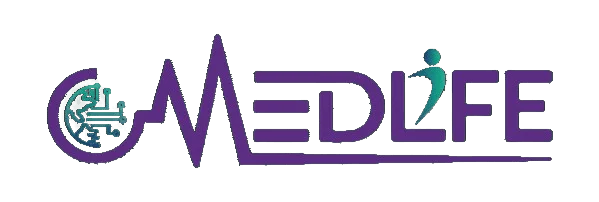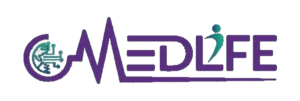Billing errors and slow claim cycles cost clinics time and revenue; the right billing software speeds cash flow and reduces denials. Chiropractor offices often struggle with mixed payer models (insurance + cash), messy SOAP-notes workflows, and lagging AR (accounts receivable), which eat into profits.
According to user reviews, practices using chiropractic-focused systems report fewer claim denials and faster payment cycles, often cutting billing admin time by 30%. This guide will walk you through top billing software for chiropractors, what features matter most, and who each system fits best so you can choose the right tool faster.
Need Help with Chiropractor Billing?
Book a free consultation to simplify your billing, speed up reimbursements, and cut down denials.
TALK TO AN EXPERTTL;DR – Top picks at a glance
Here is a summary of the six great billing software for chiropractors, with target fits so you can decide fast:
- ChiroTouch: Best all-in-one chiropractic EHR + billing for U.S. practices (good for scaling clinics)
- ChiroFusion: Strong cloud practice management with integrated billing (good for practices wanting simplicity)
- ChiroSpring: Easy, chiropractic-focused workflows & highly rated on Capterra
- DrChrono: Flexible EHR with solid billing features, strong for Apple shops
- Kareo: Billing/PM specialist good if you need robust claims management and billing company support
- Splose / zHealth: Newer allied-health platforms with simple pricing and automation; worth considering for cash-based or allied health workflows
Why a chiropractor needs billing-aware software
Chiropractic practices face special billing challenges: you use ICD/CPT billing codes for musculoskeletal and spinal care; you often combine insurance and cash payers; you run SOAP-style notes that must feed billing properly; and denials happen if documentation or coding errors are small.
Specialty systems reduce admin time, reduce denials, and improve cash flow. For example, ChiroTouch is recognized in Capterra & GetApp for its cloud-based insurance eligibility tools, integrated billing workflows, and configurable SOAP templates, which have helped many practices reduce billing rejection rates.
Using software that understands chiropractic workflows means your staff spends less time fixing paperwork and more time serving patients.
Top billing software options (six short profiles)
ChiroTouch: Best chiropractic-specific all-in-one
Built specifically to perform medical billing for chiropractors, ChiroTouch offers SOAP templates, scheduling, integrated billing, online intake, and features like AI documentation helpers. Vendor plans start around US$159/month for core EHR + billing packages.
Strong when you want a system purpose-built for chiropractic: macros, biller features, and workflow built around your needs. Pros: specialty templates, large user base, solid claim support. Cons: some users report slower support response and slightly dated UI in parts.
Good idea: test the demo and see whether your most frequent payers are supported in their clearinghouse integration. (Capterra shows 4.0/5 across many users)
ChiroFusion: Easy cloud EHR + billing for chiropractic clinics
ChiroFusion offers cloud-based practice management with integrated claims processing and billing workflows designed for chiropractic clinics. It’s a fit for small-to-mid practices that don’t want heavy customization.
It gives you basic features like appointment scheduling, billing submission, and patient tracking. Pros: streamlined setup, chiropractic-friendly workflows. Cons: you should check in advance whether reporting & clearinghouse options meet your local insurance payer needs; some practices want deeper analytics.
ChiroSpring: Highly rated, chiropractic-focused PM & billing
ChiroSpring is popular on Capterra for usability and speed. Users praise its simple documentation, quick billing, and ease of learning.
It’s good if you want minimal friction, fast setup, mobile-friendly access, and strong chiropractor-specific features like adjustment records and patient reminders. Pros: excellent UX, lower learning curve. Cons: advanced billing analytics or highly complex claims management may be more limited; make sure your region’s insurance vendors are supported.
DrChrono: Flexible EHR with strong mobile/Apple support
If you or your staff use iPads, Macs, or you want mobile documentation, DrChrono is worth considering. Has billing, claims submission, flexible workflows, patient portal, good mobile app.
Pros: modern UI, flexibility, integrations. Cons: more generalized than chiropractic-only systems some chiropractic-specific templates may need customization; support feedback is mixed, so demo references are a must.
Kareo: Billing and revenue cycle management specialist
Kareo shines for billing & claims heavy practices. If your clinic processes lots of insurance claims, needs AR aging, supports billing company workflows, Kareo offers strong claims tools.
Pros: robust functionalities for claims management, payment posting, marketplace for medical billing services. Cons: less chiropractic-specialized features than ChiroTouch (adjustment templates, etc. may need workarounds), cost may be higher for full feature set.
Splose / zHealth: Modern allied-health options with lean pricing
Splose (and platforms like zHealth in certain markets) are newer, allied-health-friendly platforms with simpler pricing, good automation, lighter interfaces, especially appealing for mostly cash-pay or mixed model clinics in markets outside the U.S.
Pros: low cost, simple automation, modern UI. Cons: chiropractic-specific needs (SOAP templates, insurance workflow, payer network integrations) may be less mature; if you rely heavily on insurance, verify that capability.
Here’s How to choose: 6-point buying checklist
Here’s a checklist to use in vendor evals so you avoid costly mis-fits:
- Insurance vs cash mix: does software support both claims & cash payments?
- Specialty templates: verify SOAP notes and adjustment records are built-in.
- Reporting & AR tools: aging reports, denials tracking, payment posting robust.
- Integrations: patient portal, payment processors, clearinghouse connections.
- Usability & training: how steep is the learning curve; how long to go live.
Support & references: ask vendors for clinics like yours; ask for SLA, response times; request demo showing an end-to-end claim.


